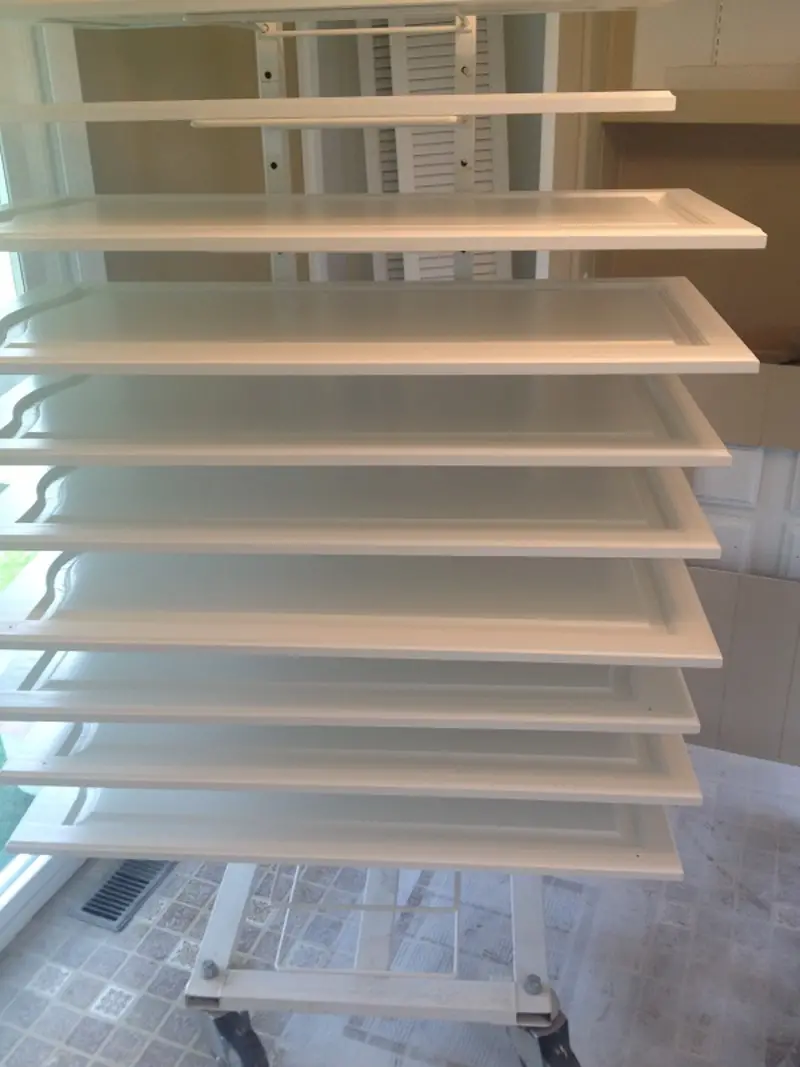I told you at one point thatvarnishes must be chosen according to their properties. For example, for a table we are very interested in the resistance of the lacquer to aggression (scratches, stains, knocks), whereas for other pieces of furniture this is not so important. A wooden object that stands outside will have to withstand the action of environmental factors, whereas one inside has no such problems. These properties are given by the type of varnish, the resin from which it is made. It is the resin that also determines how the varnish dries. The conditions for a natural dryingcorrect being described in another article, I propose to see how the varnish dries according to the resin that determines its characteristics.
Depending on the nature of the resin, drying can be of 3 types: physical drying,chemical andcombined.
Physical drying
Physical drying is specific to nitrocellulose products - one of the oldest, simplest and easiest varnishes to apply. The basic resin, nitrocellulose, is dissolved in a mixture of solvents. After application, the varnish dries by simply evaporating these solvents. The process is reversible, i.e. if thinner is applied to the varnish film it will dissolve and become liquid again.
Reversibility is a disadvantage in terms of film strength, but an advantage if you want to refinish for various reasons. The varnish film does not resist if you spill a glass of alcohol over it, but if there are defects or you want to replace the finish, the varnish film will washwith thinner.
Chemical drying
When the film is obtained as a result of a chemical reaction between two components A and B we talk about chemical drying. This is the case for polyurethane, acrylic with curing or polyester products. If you decide to work with such products, you should be aware that the reaction starts as soon as the hardener (component B) is mixed with the base resin (component A). Drying is not instantaneous, however; there will be time to apply the mixture.
The time during which the mixture is liquid and of constant viscosity is called pot-life. It is not the same for all products, differing from product to product. It can be from 15-20 minutes to 6-8 hours or more. After this time, the mixture should no longer be applied even if it is still liquid, as it loses its properties. Its viscosity increases and the temptation to dilute it for further use must be resisted. Why? Because in the meantime the reaction has started in the mixture and the diluent cannot dissolve the compound formed, the reaction is irreversible.
The advantage of using these types of products is the very good resistance of the film. The disadvantages start from the pot-life. That is, if more than the required quantity is mixed, the remaining difference is lost if not used within the pot-life limit. Problems can also arise if the mixing of components is not done correctly according to the instructions on the data sheets or packaging.
If we forget to add hardener the film does not dry and remains sticky. If less catalyst is added the resulting film will be soft (no mechanical strength) and if more is added the film will become brittle.

Combined drying
Drying of water soluble materials is an example of combined drying. Waterborne products are dispersions of acrylic, polyurethane or acrylic-polyurethane resins in water. When applied, the water evaporates and the molecules come together. This is the physical drying part. That's why I've always said that ventilation is very important with this type of product. It helps to remove the water as quickly as possible. When the molecules get close enough they start to react with each other, forming the water-insoluble varnish film. This is the chemical part of drying.
Also a combined drying is that of alkyd paints. The film is formed as a result of solvent evaporation and the reaction between alkyd resin and oxygen in the air. As long as the paint is coated and does not come into contact with oxygen in the air, it remains liquid. Applied thinly, it removes solvent more quickly and the large surface area in contact with air speeds up drying. After use, the containers should be tightly closed so that the paint remains liquid for as long as possible. It will, however, form a dry puddle on top because air has already entered the container. This is why linseed oil is sometimes put on top of the paint to eliminate contact with the air in the can.
Only by choosing the right finishing materials can you be guaranteed to get a quality film. They must be applied and dried correctly, following the manufacturers' recommendations.
I hope you find the above information useful. As usual, additions are welcome. And if you have any questions or queries, please leave them in the space below. I'm sure I'll reply.



























Add comment